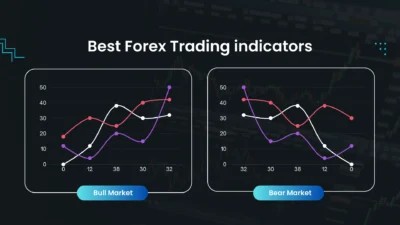Understanding Liquidity in Modern Financial Markets
In today’s complex financial landscape, institutional traders dominate price action through sophisticated techniques like liquidity sweeps. These powerful moves form the foundation of Smart Money Concepts (SMC) and the ICT trading strategy, allowing large players to manipulate markets while trapping retail traders. Understanding how to identify and trade liquidity sweeps can transform your trading approach across Forex, stocks, and cryptocurrency markets.
Liquidity sweeps occur when price aggressively breaches key levels to trigger stop losses before reversing direction. This deliberate market manipulation serves multiple purposes for institutional traders. Banks and hedge funds use these moves to fill large orders at favorable prices, while market makers create false breakouts to trap retail participants. The mechanics remain consistent – price breaks through obvious swing points where retail traders cluster their stops, sweeps up the liquidity, then reverses sharply against the breakout traders.
Distinguishing Between Liquidity Sweeps and Liquidity Grabs
Many traders confuse liquidity sweeps with liquidity grabs, but understanding the difference proves crucial for success. A genuine liquidity sweep in Forex or crypto trading typically shows strong momentum that breaks through key levels with conviction, followed by immediate rejection. These moves often align with order blocks or Fair Value Gaps (FVG) and frequently lead to significant reversals.
In contrast, liquidity grabs tend to be more deceptive. These quick spikes beyond technical levels lack sustained momentum and usually occur in low-volume conditions. While sweeps often precede reversals, grabs typically lead to continuation of the existing trend. Recognizing these differences helps traders avoid false breakouts and position themselves with institutional order flow rather than against it.
Identifying High-Probability Liquidity Zones
The foundation of successful liquidity sweep trading lies in accurately identifying where liquidity pools accumulate. These zones typically form around obvious technical levels that attract retail trader attention. Buy-side liquidity (BSL) forms above swing highs where short stops cluster, while sell-side liquidity (SSL) accumulates below swing lows where long stops gather.
Sophisticated traders enhance their analysis using tools like Fibonacci extensions to project future liquidity areas. Volume profile analysis reveals significant trading activity zones, while Fair Value Gaps and order blocks provide additional confirmation points. The ICT trading strategy emphasizes combining these elements to create a comprehensive framework for anticipating institutional order flow movements.
The ICT Liquidity Sweep Trading Methodology
The ICT methodology offers a systematic approach to trading liquidity sweeps that aligns with institutional behavior. This strategy begins with identifying recent swing points likely containing retail stop orders. The critical moment comes when price approaches these zones – traders watch for aggressive breaches demonstrating genuine sweep momentum.
Order flow analysis provides crucial confirmation. Tools like footprint charts reveal absorption patterns where institutional orders halt sweep momentum. Delta divergence shows when price movement contradicts actual buying or selling pressure. The optimal entry occurs on the retest of the swept level, which now flips its role in the market structure.
Essential Tools for Institutional-Grade Analysis
Professional traders employ specialized tools to analyze liquidity sweeps effectively. The ATAS trading platform stands out for its advanced footprint charts and delta analysis capabilities, providing unmatched visibility into institutional activity. Bookmap’s heatmap visualization offers another perspective, graphically displaying stop order clusters.
For traders without access to specialized platforms, TradingView’s volume profile studies offer valuable liquidity insights. The ICT Power of 3 indicator helps identify key Market Structure Shifts (MSS) that often accompany significant liquidity sweeps. These tools collectively provide the edge needed to compete in institutional-dominated markets.
Protecting Against Institutional Traps
Understanding liquidity sweeps provides both offensive opportunities and crucial defensive capabilities. Retail traders often fall victim to stop-loss hunting by placing stops at obvious technical levels. Savvy traders avoid this by setting stops beyond predictable zones, often at levels that would invalidate their trade thesis rather than at round numbers or obvious swing points.
Equally important is the discipline to wait for confirmation rather than chasing price movements. Genuine liquidity sweeps typically show clear rejection signals through candlestick patterns or order flow indications. Combining these protective measures with proper position sizing significantly improves trading performance against institutional manipulation.
Market-Specific Considerations
While liquidity sweep principles apply universally, market-specific factors require consideration. Forex markets show more predictable liquidity patterns, especially during London and New York session overlaps. The presence of central banks and prime brokers creates structured liquidity distribution in currency markets.
Cryptocurrency markets present different challenges with thinner liquidity in many pairs and more pronounced volatility. The decentralized nature of crypto exchanges and automated market makers (AMMs) creates unique liquidity dynamics. These differences necessitate adjustments in timeframe selection and position management when trading crypto liquidity sweeps.
Advanced Integration Techniques
Experienced traders combine liquidity sweep concepts with complementary methodologies for enhanced precision. Fair Value Gap trading often coincides with liquidity sweeps, providing clear reversal zones. When a sweep occurs near a previously identified order block, the probability of a significant reversal increases substantially.
Market Structure Shifts (MSS) and Changes of Character (ChoCh) provide final confirmation points. A genuine liquidity sweep typically coincides with a Break of Structure (BOS) that confirms a change in market direction. This multi-factor approach creates a robust framework for high-probability trading decisions aligned with institutional order flow.
Practical Implementation Strategies
Moving from theory to practice requires disciplined application. Begin by studying historical charts to identify past liquidity sweeps and their characteristics. Paper trading allows for strategy testing without financial risk, while detailed journaling helps refine the approach. Many Trading platforms now offer replay functionality for practicing sweep identification in simulated environments.
For those serious about mastering this approach, consider joining trading communities focused on order flow analysis. Professional traders often share insights through webinars and mentorship programs. The path to consistent profitability lies in understanding and aligning with institutional order flow rather than fighting against it.
Final Thoughts on Mastering Liquidity Sweeps
Liquidity sweep trading offers a powerful framework for navigating modern financial markets. Unlike indicator-based approaches, order flow analysis provides real-time insight into institutional activity. By combining Smart Money Concepts with ICT trading strategies, traders can position themselves on the right side of major market movements.
The journey to mastery involves continuous learning and adaptation. Start by focusing on one market and timeframe, gradually expanding as proficiency grows. Track performance meticulously, analyzing both successes and failures. Most importantly, maintain the discipline to wait for truly high-probability setups rather than forcing marginal trades.
Remember that even skilled traders experience drawdowns – what separates them is their ability to maintain discipline during challenging periods. By internalizing these concepts and committing to continuous improvement, you’ll develop the skills needed to profit from liquidity sweeps across all market conditions. The tools are now at your disposal – your success depends on dedicated application and disciplined execution.
Liquidity Sweep Trading FAQ
A liquidity sweep is an aggressive price move beyond key swing highs/lows to trigger stop losses before reversing. Institutional traders (banks, hedge funds, market makers) use this ICT trading strategy to exploit retail traders by:
- Hunting stop-loss orders (stop-loss hunting)
- Filling large orders at better prices
- Creating false breakouts before reversals
Why Liquidity Sweeps Happen:
Institutions need liquidity to execute large trades without moving markets excessively. They sweep liquidity to:
- Trigger retail stop losses (free liquidity)
- Induce panic buying/selling for better entries
- Establish positions before reversals
Real-World Example (Forex Market):
– Scenario: EUR/USD forms a swing high at 1.1000 (many traders place stops above).
– Liquidity Sweep: Price spikes to 1.1015, triggering stops, then reverses sharply.
– Result: Banks buy at lower prices after the sweep.
| Feature | Liquidity Sweep | Liquidity Grab |
|---|---|---|
| Momentum | Strong, aggressive move | Quick spike & fast reversal |
| Purpose | Stop-loss hunting & institutional accumulation | Trapping retail traders |
| Reversal Likelihood | High (often leads to trend reversal) | Low (usually continues trend) |
| Best Confirmation | FVG (Fair Value Gap), Order Blocks | False breakout patterns |
How to Tell Them Apart:
Liquidity Sweep:
- Price breaks structure (swing high/low) with strong momentum
- Followed by immediate rejection (wick, engulfing candle)
- Often aligns with order blocks or FVGs
Liquidity Grab:
- Price spikes briefly beyond a level but lacks follow-through
- Usually happens in low-volume conditions
- Retail traders get trapped in false breakouts
Step 1: Mark Key Swing Highs & Lows
– Buy-Side Liquidity (BSL): Above swing highs (where short stops cluster)
– Sell-Side Liquidity (SSL): Below swing lows (where long stops cluster)
Pro Tip: Use Fibonacci extensions to predict liquidity pools.
Step 2: Look for Fair Value Gaps (FVGs)
– FVGs are price gaps where institutional orders are filled.
– They act as magnet zones for liquidity sweeps.
Step 3: Detect Order Blocks
– Bullish Order Block: Consolidation before a rally (institutional buying)
– Bearish Order Block: Consolidation before a drop (institutional selling)
Step 4: Use Volume Profile
– High-Volume Nodes (HVN): Heavy trading activity (likely liquidity zones)
– Low-Volume Nodes (LVN): Gaps where price moves fast (potential FVGs)
Step 1: Find a Strong Swing Point
– Identify a recent swing high/low where stops likely cluster.
Step 2: Wait for the Sweep
– Price must break the level aggressively (strong candle close or spike).
Step 3: Confirm with Order Flow
– Footprint Charts: Look for absorption (large sell/buy orders halting momentum).
– Delta Divergence: If price rises but delta is negative, institutions are selling.
Step 4: Enter on Retest
– Wait for price to retest the swept zone (now acting as support/resistance).
– Use a limit order for optimal entry.
Step 5: Set Stop Loss & Take Profit
– Stop Loss: Beyond the recent swing point.
– Take Profit: At the next liquidity zone or FVG.
| Tool | Best For | Why It’s Useful |
|---|---|---|
| ATAS Platform | Footprint charts, delta analysis | Shows institutional order flow |
| Bookmap | Real-time liquidity heatmaps | Visualizes stop clusters |
| TradingView (Volume Profile) | Identifying HVNs & LVNs | Finds key liquidity zones |
| ICT Power of 3 Indicator | Detecting MSS & ChoCh | Confirms trend reversals |
Common Stop-Hunting Techniques:
- Spikes beyond key levels (liquidity sweeps)
- False breakouts (liquidity grabs)
- News-driven volatility spikes
How to Protect Your Trades:
- Avoid placing stops at obvious swing points (use deeper stops)
- Trade with limit orders instead of market orders
- Wait for confirmation (wick rejection, FVG fill) before entering
| Factor | Forex | Crypto |
|---|---|---|
| Liquidity Providers | Banks & brokers | Market makers & AMMs |
| Stop Hunting Frequency | More predictable | More erratic (low liquidity altcoins) |
| Best Timeframes | 4H, Daily (institutional moves) | 15M, 1H (fast sweeps) |
1. Liquidity Sweep + FVG (Fair Value Gap)
– After a sweep, price often reverses into an FVG (imbalance zone).
– Trade the retest of the FVG for high-probability entries.
2. Liquidity Sweep + Order Blocks
– If a sweep happens near an order block, expect a strong reversal.
3. MSS (Market Structure Shift) Confirmation
– A break of structure (BOS) + liquidity sweep confirms a trend reversal.









